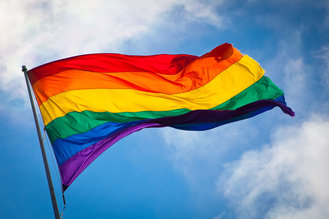Queer theory is a sociological perspective that takes account of the cultural products, social practices, and institutions which together bestow on heterosexuality a sacred status.¹
As an academic movement, queer theory is associated with the 1990s, although it can find its roots in the 1970s work of Michael Foucault, Teresa de Lauretis and Gloria Anzaldua. These academics questioned and explored the ways in which western social structures create and enforce rigid standards of sexual regulation.¹
Queer theory builds on the foundation that feminists and those who study gay/lesbian studied. Feminist theory challenges the idea that gender is part of the essential self and gay/lesbian studies perform a close examination of the socially constructed nature of sexual acts and identity.¹ Queer theory expands its focus to encompass any kind of sexual activity or identity that falls into normative and deviant categories, focusing on the clashes between sex, gender and desire.
Queer theory is associated with lesbian and gay subjects, but the framework also includes topics like cross-dressing, intersex and gender identity, gender ambiguity and gender-corrective surgery.¹ The term used to be a slang for homosexual and was often used for homophobic abuse. Now it is used as more of an umbrella term for sexual identifications and the study of those identifications.
As a framework, queer theory aims to debunk the myth of stable sexes, genders and sexualities out from a poststructuralist perspective of identity being a constellation of multiple and unstable positions.¹
Queer theory has two predominant strains¹:
- Radical deconstructionism: interrogates categories of sexual orientations
- Radical subversion: disrupts the normalizing tendencies of the sexual order
An important part of queer theory is the HIV/AIDS discourse. There are several in which the disease has affected queer theory:
- Persistent misrecognition of HIV/AIDS as a “gay” disease
- Homosexuality imagined as a kind of fatality
- The coalition type politics that surrounded HIV/AIDS activism. This became a battle fought not just by gay men, but lesbians, bisexuals, transsexuals, sex workers, people with AIDS. This was one of the first practical applications of the idea of a queer ally.
Resources:
1. Ritzer, George. Queer Theory. Retrieved May 8, 2014, from http://www.sociologyencyclopedia.com/public/tocnode?id=g9781405124331_yr2012_chunk_g978140512433123_ss1-3
© BrainMass Inc. brainmass.com April 27, 2024, 3:53 pm ad1c9bdddf